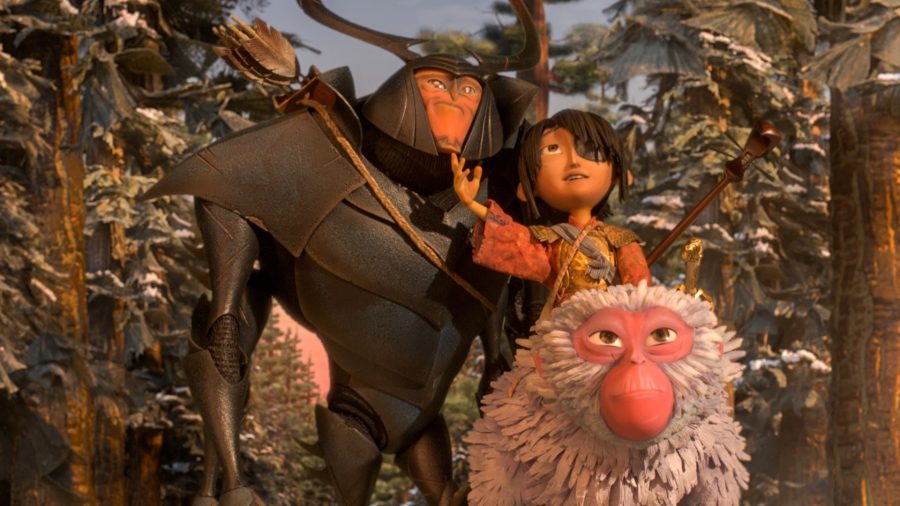Now Showing: Kubo and the Two Strings
September 4, 2016
Within the first few seconds of “Kubo and the Two Strings,” it is clear that you are about to witness a masterpiece. The narrator warns you not to blink, and I suggest you take his advice because you wouldn’t want to miss a second of this classic in the making.
The quality of the animation, storyline, and overall production of the movie sets it apart from all the other animated productions in recent years, including “Finding Dory.” This stop-motion animation, much like the studio’s previous hits, “Coraline” and “ParaNorman,” allows inanimate objects to appear as if they are moving on their own. Although the animation technique is similar, Kubo brings something to the table that has never been done before.
The movie, set in a small village in Japan, begins with a woman traveling on the ocean during the night, obviously scared and in distress. Out of nowhere, a huge wave overtakes the woman, landing her on a beach. When she secures her place on the sand, a baby with a missing eye appears; we later learn that his name is Kubo (Art Parkinson).
Eleven years later, Kubo is living alone with his scarred mother. Every day he enters town and plays the shamisan, a magical Japanese instrument. This instrument holds sacred powers that allow Kubo to bring his origami pieces to life in order to entertain the townspeople. We then learn more about Kubo’s father, a mysterious samurai soldier who died protecting Kubo’s last eye. Kubo’s mother comes in and out of lucidity, and she continues to get weaker. After disobeying his mother’s order to not go out after dark, Kubo finds himself in danger as his mother’s sisters and father are after his other eye.
The only way Kubo can protect himself is by finding the samurai armor that his father left behind. Sent by his mother to lead him on his journey, a monkey doll, voiced by Charlize Theron, comes to life to help. Along the way, they encounter a cursed samurai soldier who is forced to live his remaining life as an insect (Matthew McConaughey). As they continue on their adventure, they run into many bumps on the road.
Although the storyline is pleasing, what really sets the film apart is the animation process. Everything comes together so perfectly that you feel like you are watching a moving piece of art on screen. The color schemes and movements exude both beauty and finesse.
Another enjoyable aspect is the representation of Japanese culture in the film. From the traditional clothing to the wonderful sounds of the shamisan, culture is conveyed throughout the film. Although I would have preferred to hear Japanese-American voice actors portraying these characters, Theron, McConaughey, and Parkinson did phenomenal jobs in bringing life to the characters.
Every aspect of this movie was so enjoyable and it’s safe to say that you have not heard the last of “Kubo and the Two Strings.” This movie is sure to bring you everything you want and more, and as the narrator states throughout the film, “that really is the least of it.”




